// Monitoring
Executive Perspectives on the Latest in Wholesale Monitoring
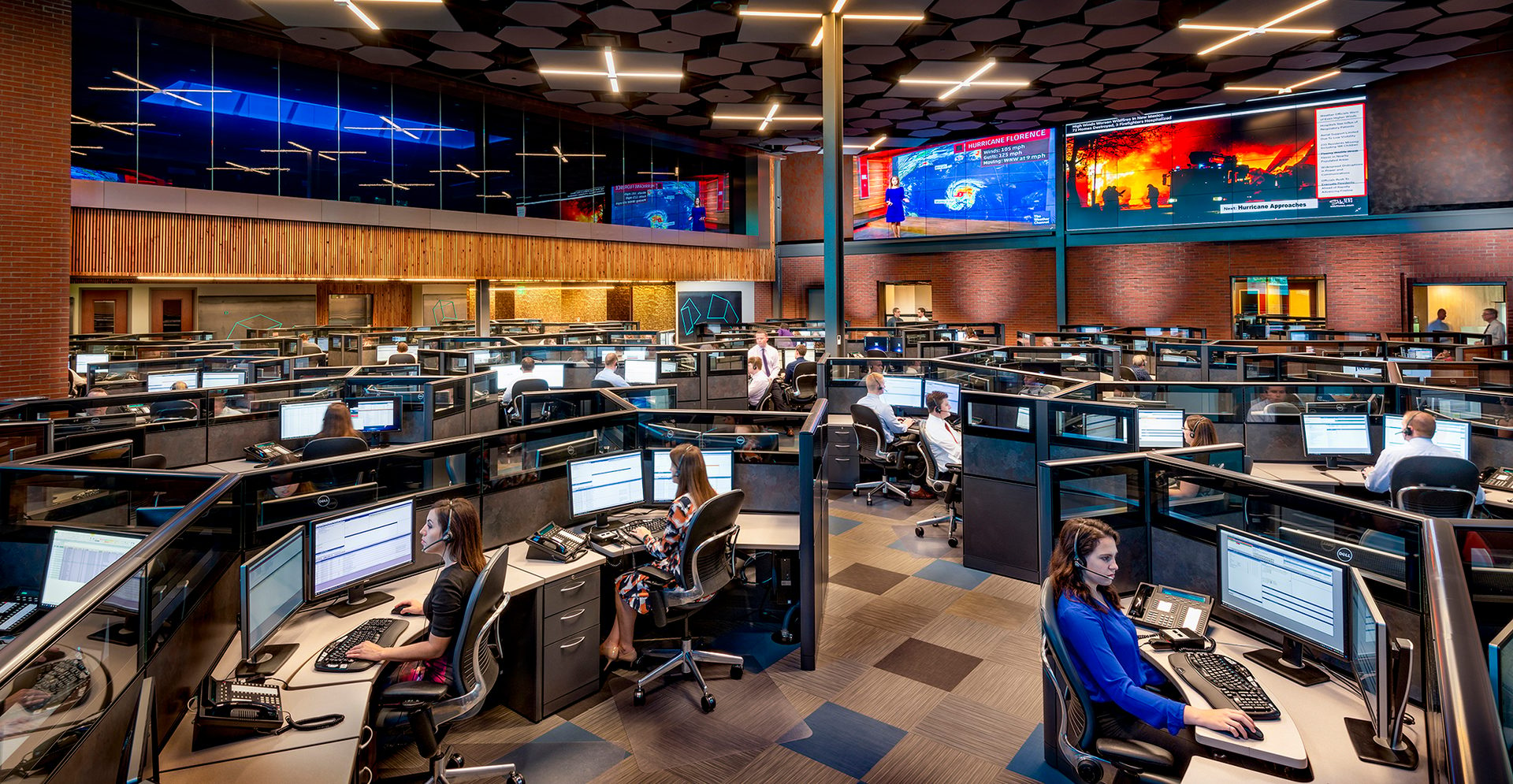
Many central stations are working to adopt TMA-AVS-01, a standardized method to calculate an alarm score, or classification level, that results in a repeatable metric to estimate the validity or potential threat level for intrusion alarm activations.
IMAGE COURTESY OF RAPID RESPONSE
From leveraging advanced technology for enhanced services to combatting false alarms, seven central station leaders shed light on the evolving landscape of wholesale monitoring, where opportunities abound and innovations are redefining the sector’s role in modern security ecosystems.
By Rodney Bosch, SDM Senior Editor
In an era where security concerns are paramount, central stations have emerged as essential nerve centers in safeguarding homes, businesses and communities. Ahead, we query top-level executives from leading wholesale monitoring centers to delve into the latest trends and emerging opportunities that are shaping the future of this critical sector.
SDM: What technologies or services have you recently introduced to enhance alarm monitoring and response?
Jim McMullen, President, COPS Monitoring, Williamstown, N.J.: While we wouldn’t necessarily consider video a new technology or service, we have focused more resources on our professionally monitored video offerings. Our video services, collectively branded AlarmWATCH, are handled by a group of specially trained operators who analyze and respond to events triggered by video cameras, NVRs or AI. Monitored video not only opens the door for dealers to earn new RMR by revisiting customers with existing camera systems, but also offers new customers a whole host of options like virtual guard tours, virtual guardian/escort, off-site door/gate control and more. Plus, monitored video will play an important role in assisting law enforcement and reducing false alarms as the ANSI standard TMA-AVS-01 gains traction.
McMULLEN

Trey Alter, President & CEO, Dynamark Monitoring, Hagerstown, Md.: At Dynamark, we have seen an explosion in proactive video monitoring solutions. We have made it easier than ever for our dealers to monetize the video cameras they are installing into RMR. We offer not only the gold standard Immix platform for higher-end solutions, but also have integrated our software with Alarm.com to provide analytics-driven monitoring through their suite of cameras. We have stopped more crimes in the last year than in the previous 10 combined. Monitored video has been talked about for years, but our investments in this area are finally helping dealers drive higher revenue per customer.
Alter

Steve Mayer, Vice President, Operations and Administration, Emergency24, Des Plaines, Ill.: Today, the most significant advances are enhancing the pace and level of information shared with emergency call centers. Emergency24 is the founding partner of Honeywell’s CLSS enhanced monitoring program that does just that with commercial fire dispatching. We transformed commercial fire dispatching from a 2.5-minute call to a 13-second data transmission. This not only dramatically accelerates dispatching; it reduces errors and clears a path for transmitting supplemental information (e.g. floor plans, knox box location or video) directly to first responders. Emergency24 is leaning forward to provide this capability for security and non-commercial fire alarms.
Mayer

What has not changed is our commitment to personal level of service and quality that has defined who Emergency24 is for 55+ years. Though Emergency24 continues to invest in technology to benefit our alarm company partners, we hold onto the age-old practice of customer service. Our family business is your family business.
Jason Caldwell, Director: Marketing, Business Development, Guard Force Accounts, Immix, Tampa, Fla.: Immix has taken several steps to enhance alarm monitoring and response over the years. Our AI Link solution, launched in 2020, was an aggressive approach to helping monitoring centers dramatically reduce false alarm traffic and enhance operational and cost efficiencies. More recently Immix has sought to provide solutions that enhance dispatch and apprehension capabilities to get better intelligence into the hands of responders to allow for more effective and safer responses. Immix’s partnership with Incident Co., a live incident reporting solution provider, is a perfect example.
Caldwell

The joint solution allows central station, or SOC operators using the Immix platform, to select alarm clips that demonstrate suspicious activity for real-time sharing. Once an IncidentCODE is generated within Immix, an automated report is sent to a predetermined recipient list. This automation expedites the communication process as the operator does not have to verbalize the threat to the customer, which shortens calls and therefore minimizes the critical passage of time.
Another example is the Immix partnership with RSPNDR, a company that connects monitoring stations to a fast-growing, on-demand network of licensed mobile guards who quickly respond to alarms based on proximity to the incident location. This joint solution allows Immix users to access RSPNDR’s one-click mobile guard response services feature in the latest versions of the Immix CS and GF software platforms, greatly enhancing security event management. The embedded, end-to-end solution allows central station operators monitoring video security events in the Immix platform to automatically generate a mobile security response through RSPNDR at the click of a button. Each type of security event can have a custom response procedure using Immix dispatch protocol through RSPNDR’s network of distributed mobile guard companies to secure the sites on demand and provide complete transparency and reporting.
The second area of emphasis Immix has focused on of late is that of immediate incident investigation. Our joint solution with Captis Intelligence, allows a monitoring operator, with a couple of mouse clicks, to get a positive identification of a suspect onsite or immediately post-event, along with that person’s criminal history. Captis has built the first centralized, cloud-based subject intelligence system connected to the world’s largest private database of open-source criminal files provided by county, state and federal agencies. This is truly groundbreaking technology, never before available to the security monitoring industry, that is only scratching the surface of its potential.
Morgan Hertel, Vice President, Technology Innovation, Rapid Response Monitoring, Syracuse, N.Y.: Rapid Response continues to provide monitoring exclusively from our hardened facilities with no monitoring specialists, dealer support or data entry staff working from home. This gives all the stakeholders a consistent, secure and reliable experience.
Alarm monitoring is changing. The move to a more flexible or custom experience is becoming a necessity if you want to try to serve all the different user types. Rapid Response has been hyper focused on making the subscriber experience the best it can be. We call this Dynamic Workflow and it’s based on all kinds of new data sources and information we can now ingest and make more informed decisions on how we manage an alarm.
Hertel

Woodie Andrawos, President, NMC, Lake Forest, Calif.: NMC has recently introduced Nexus, a centralized hub to enhance alarm monitoring, account management, operational efficiencies and response procedures for alarm dealers. This intuitive web app leverages the latest technologies and services to optimize operational efficiency for users. It offers real-time alert notifications, detailed incident reports and interactive dashboards for a comprehensive view of alarm systems. Offering valuable insights and analytics enables predictive analysis, empowering proactive decision-making to mitigate potential risks. Additionally, Nexus facilitates seamless collaboration and communication among stakeholders, enhancing alarm monitoring and response effectiveness and efficiency. This innovation is truly a game changer for our business and our dealers.
Andrawos
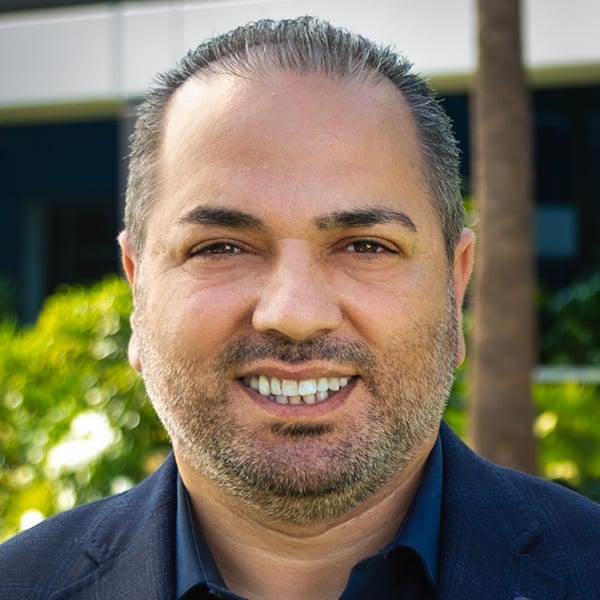
Peggy Page, Strategic Account Manager for Contract Monitoring, Securitas Technology Corp., Pensacola, Fla.: The new Alarm Manager solution allows alarm users to instantly respond to a triggered alarm from anywhere. They can securely text emergency contacts and collectively decide to verify or cancel an intrusion alarm. No downloads or logins are required. This solution helps speed up the verification process and greatly cuts down on false dispatches.
Page
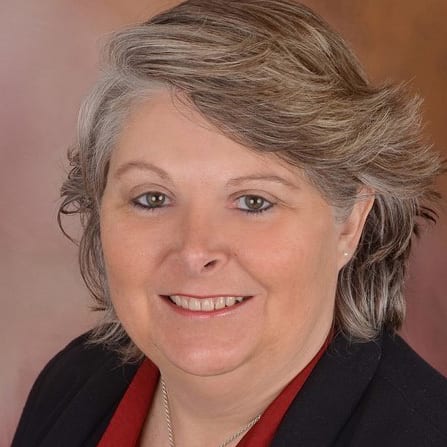
SDM: What training and support programs do you offer to your alarm dealer partners to help them succeed in their businesses?
McMullen: In addition to our dedicated dealer support department and internal training team to assist dealers daily, COPS often offers webinar training sessions that include a deeper dive into a variety of topics to help dealers succeed. Still, while webinar training is a convenient and important tool, we continue to believe that in-person training and events are invaluable to dealers for interaction, information sharing and networking. With that in mind, we’ve been a monitoring sponsor for the past three Synergy Conferences in Orlando, Dallas, and Philadelphia, and we’re planning to release more dates in additional cities in 2024. These one-day sessions gave very detailed information on topics that help dealers get the most value from their business.
Alter: Our strategy has always been to provide dealers with the best tools available and train them in how to take advantage of them. Dynamark has developed one of the industry’s most robust dealer software platforms that is both user friendly and full of insights into their business. Most dealers would benefit from harnessing the power of their customers’ data but they do not have the software tools or staffing to make it a priority. We take the guesswork out by leveraging that data and providing them actionable reports and dashboards they can use to make more money.
Mayer: Emergency24 provides comprehensive and always available training on account set up and updates to our dealer secure portal, apps and subscriber apps. We share information about new and existing solutions that can improve RMR, lower costs and improve customer satisfaction.
Caldwell: Immix offers a full suite of e-learning modules for all aspects of our software automation, from front-line alarm handling for operators, to back-end system administration for IT personnel. These e-learning modules are available for the lifetime of the relationship between Immix and our partners so that new employees can access them while onboarding and existing employees can either review previous courses or attend new ones as they rise up the corporate ladder, so to speak.
In addition, once customers have spent some time using the automation and have a comfort level, we offer an advanced certification training course for Immix administrators and deployment specialists within our partner companies. This enables our partners to take increased ownership in the knowledge of the intricacies of the software and, thus, the success of their business.
Hertel: Supporting our dealers is extremely important to us. Each Rapid dealer receives multiple dedicated representatives that provide concierge level service. Our solutions engineers provide in-person or virtual training on our dealer and customer access tools. Our marketing team regularly releases educational blog articles, social media posts, e-mail blasts and toolkits to give dealers a competitive edge in the market.
Andrawos: We are proud to offer comprehensive training and support programs to assist alarm dealer partners in increasing productivity and efficiency across their businesses. The NMC Training Academy (NTA) provides a range of educational resources through live webinars and online courses. These programs cover essential aspects of the alarm monitoring industry, equipping partners with the knowledge and skills needed to excel. The courses enhance proficiency in alarm technologies, industry regulations, customer service and sales strategies. NMC also offers personalized support and guidance to help dealer partners navigate challenges and make informed business decisions, ultimately fostering growth and success within the industry.
Page: With over 30 years in the alarm industry, Securitas Technology has earned the reputation as America’s leading monitoring network. We offer sound advice, because there is no hidden agenda to dealers at every stage of their business life cycle. As a third-party advisor, we can provide the advice you can trust. This service is free for all Securitas Technology wholesale monitoring dealers.
Wholesale monitoring centers serve as go-to providers of specialized training for security dealers on new products and services, helping them remain competitive and top of the latest technologies and developments in the industry.
IMAGE COURTESY OF EMERGENCY24
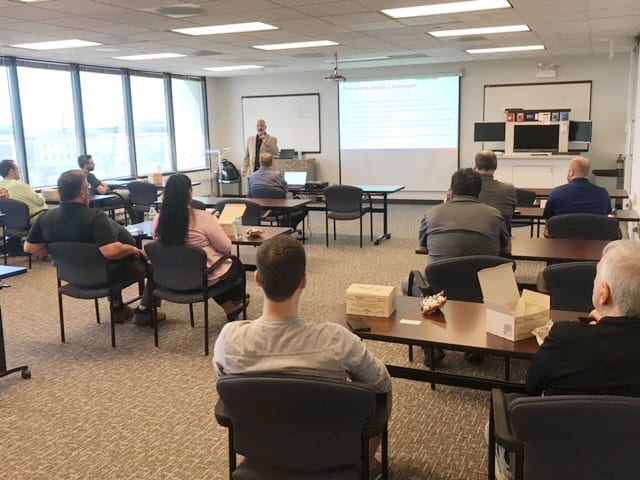
SDM: Are there any new initiatives or projects that you're particularly excited about and believe will benefit alarm dealers?
Alter: I am pretty excited about the new Honeywell CLSS platform. If you look at what they are building and investing in there to modernize the flow of data to help first responders, it is exciting. It is a huge task they have embarked on, and they continue to make it more valuable every day. We are excited to be a part of watching this unfold. They deserve credit for thinking boldly and ambitiously.
I would also add that we are seeing the pace of the ASAP to PSAP program accelerate. Dealers who have access to this are absolutely providing their customers with a better overall experience that those without. TMA and many others have worked hard to move this initiative forward and it continues to bear fruit.
Mayer: We are pushing solutions to our dealers that help them “just say no to POTS.” We offer our dealers the lowest cost solution to transition to cellular communication via Honeywell Pathways and offer competitive services through M2M and other third party services. Of course, as I stated above, we are excited about our partnership with Honeywell. We continue to enhance our development partnership with BluePoint Alert’s active shooter rapid emergency response. We are layering in new solutions for that suite of tools and it has been a growing area for alarm installers.
Hertel: With change also comes innovation. The AVS-01 alarm scoring standard brings a significant opportunity to add all kinds of new services and products into the mix. Rapid Response has already completed the work to provide scoring on all intrusion alarms, and we are rolling it out in a tiered approach. The AVS-01 score can not only be used to gain enhanced responses from law enforcement, it also is a basis for driving our Dynamic Workflow response.
In general, centrals are pretty good with things like weather or power outages and even equipment failures. The industry has 200 years of experience with those types of events. What no one in the industry has a lot of experience with are cyber incidents.
— Morgan Hertel, Rapid Response
Andrawos: At NMC, we recognize the dynamic nature of the alarms and monitoring sector, so we constantly work to develop new and exciting ways to support our dealer partners. Our team is dedicated to keeping pace with the rapid advancements in technology and security trends, and our goal is to keep partner businesses up to date with the modern industry. Interested parties should stay tuned because there’s definitely more to come in the near future.
The Nexus centralized hub is a prime example of how NMC is taking steps to drive new levels of innovation in the alarms industry. By leveraging the power of advanced web-based technology, Nexus provides an integrated platform that facilitates seamless communication and coordination between alarm monitoring centers and their clients. This innovative solution offers real-time monitoring, intelligent analytics and efficient alarm response protocols, optimizing the alarm-handling process. The user-friendly interface and customizable features empower alarm monitoring professionals, enhancing their ability to deliver rapid and precise alarm responses. NMC also offers other valuable monitoring services such as proactive video monitoring from Netwatch, driving innovation in the video surveillance industry in addition to the alarms sector, further solidifying our dedication to advancing the security industry as a whole.
Page: CLSS, Connected Life Safety Services, places key panel functionality in the palm of the user’s hand. Technicians can disable outputs, activate sounders, reset the panel, activate LEDs to confirm location and even update device labels using their mobile phone. The remote consolidated view of a customer’s system provides insight into progress of maintenance activities against plan with access to regulatory and non-regulatory reports at the touch of a button. They can also quickly generate compliance reports following inspection or maintenance visits reports can be generated, shared and stored in the cloud for audit purposes. This is a game change for system integrators.
SDM: Could you describe your approach to cybersecurity and data protection, given the increasing importance of these aspects in the industry?
McMullen: Attacks are just one way bad actors can compromise your data security or shut down your business. Viruses, ransomware and other malicious software can be unintentionally introduced onto your network by well-intentioned employees. In fact, I’ve seen more than one study that suggests human error accounts for more than 80 percent of data breaches.
Take, for instance, the 2017 data breach of Equifax that compromised the personal information of about 150 million people. This malicious attack could have been prevented by installing a simple, known security patch. Equifax is, of course, not an isolated incident. Dozens of other well-known companies have also had data breaches in recent years.
So, we take the approach of “Trust but Verify.” In other words, it’s one thing to believe your facility and network are secure; it’s quite another to have an independent verification that you’re adhering to best practices. To take steps toward this goal, we began our SOC 2 certification in 2017 prior to the Equifax breach. A SOC 2 certification is a an extensive six-month-long process that helps to ensure that our security, systems availability, confidentiality, processing integrity and privacy adhere to high auditing standards set forth by the AICPA.
Central stations play a pivotal role in helping security dealers combat false alarms by employing advanced verification techniques and real-time monitoring to sift through genuine security threats from non-critical events, ensuring a more efficient and reliable response.
IMAGE COURTESY OF NMC
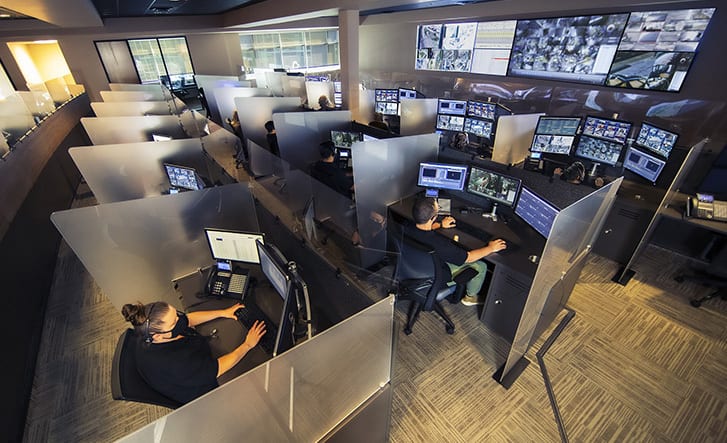
We don’t propose to be cybersecurity experts, so we partner with leading companies that are. So, in addition to our annual SOC certification, we conduct regular random email phishing tests to our employees with instant feedback and training if they fail to help ensure they have a mindset for security and are careful when clicking links. We also work with companies that perform network vulnerability and penetration tests.
I think we can all agree that an independent audit from UL is an important standard for central stations. However, standards aren’t by definition “above and beyond.” Instead, outline the “price of admission” for providing UL-Listed monitoring. We believe that the additional independent verifications we receive from expert firms are critical to providing better cybersecurity. Quite honestly, we’re a little surprised more monitoring companies aren’t SOC 2 certified.
Alter: We incorporate a model that assumes every request for access is malicious. Requiring authentication and limiting access privileges to network areas is also a best practice. Segmenting your network and creating DMZ’s [demilitarized zones] also help manage your exposure to any attempts to breach the security. We do not allow any of our dispatchers or monitoring personnel to work from home due to the extreme risk unmanaged VPN networks present. Right now the dispatchers working from home are the industry’s biggest vulnerability.
Caldwell: Being in the security software space, Immix takes cybersecurity initiatives quite seriously. Immix is ISO 27001 Compliant and SOC 2 Type 1 compliant. The company also undergoes a both a corporate and software penetration test every six months by an accredited third-party provider.
Hertel: Cybersecurity is one of the biggest threats there is to monitoring centers today. In general, centrals are pretty good with things like weather or power outages and even equipment failures. The industry has 200 years of experience with those types of events. What no one in the industry has a lot of experience with are cyber incidents. We take a layered approach using the most sophisticated hardware and software available. But in a world full of sophisticated phishing attacks and zero-day vulnerabilities, the weakest link for all companies is your employees. With this in mind, Rapid Response is training and testing all employees with internet or e-mail access continuously to make sure they are vigilant at all times and never “click happy.”
There are new threats or methods of attack every day. It takes constant diligence and preparation to protect your organization. It’s a real challenge to keep up with, but it’s something we must work hard on every day.
Andrawos: The NMC team is well aware of the importance of data protection when it comes to our services and apps, as these offerings rely heavily on providing access to business data that drives operational efficiency; but we have to make sure access to that data is secure and only available to authorized users. With that in mind, we’re constantly taking steps to ensure mission-critical user data is kept safe through data encryption and regular penetration testing as well as other measures.
I would encourage dealers to take time to audit their technology and be honest with themselves about where they are versus what they have access to. If your vendors are not providing you with the very best technology then they are taking advantage of you and preventing you from reaching your goals.
— Trey Alter, Dynamark
SDM: What specific challenges have you noticed in the security and fire alarm monitoring industry, and how are you addressing them?
Alter: I think as an industry, we are sometimes too slow to embrace change. Change should be thought of as opportunity and I believe our industry often believes change is negative. The status quo always seems like enough until someone leap frogs you with a better mouse trap, and then it is too late. I would encourage dealers to take time to audit their technology and be honest with themselves about where they are versus what they have access to. If your vendors are not providing you with the very best technology then they are taking advantage of you and preventing you from reaching your goals.
Mayer: Emergency24 progresses uniquely in the industry as a family owned central station. At this moment, there is a lot of consolidation and investment across all aspects of our industry. We continue to grow organically and compete by focusing on providing great service and industry leading response times. For us, it’s the only way to operate.
Caldwell: False and nuisance alarms continue to be a challenge for monitoring providers in terms of operational efficiency. The fines associated with false alarm dispatches continue to be a pain point for end customers. This is one reason we are particularly proud of the enhancements discussed above.
While the monitoring industry still faces challenges from verticals such as DIY services and others, automation providers and their technology partners are not resting on their laurels. Far from it, in fact.
The question has now become, “What is the next frontier for the video monitoring and managed services industry?” Technology providers are now building solutions that can enhance service offerings past the point of receiving an alarm or notification of a security threat and following a set response protocol. How can the industry tackle that “last mile” of creating a more effective dispatch, increase the chance of garnering an apprehension and providing the data and reporting to ensure that is done properly? We believe Immix is on the right track in that regard.
Hertel: The workforce continues to be a challenge for most centers and getting qualified people in all areas will continue to be a challenge for the foreseeable future. This means that wages are going to continue to rise, and the availability of staff members will be an obstacle, especially for centers that are growing. Rapid Response adjusted its labor rates and added shift differentials a couple of years ago, so we are in good shape; but for many it’s a real challenge, and that’s a big industry wide problem.
Andrawos: The biggest challenge impacting the monitoring industry for some time has been the ongoing challenge with false alarms. If a false alarm causes responders to dispatch to a monitored site, the site owner can be levied with costly fines that can impact their business. In addition to this, false alarm calls can be a detriment to responders, as unnecessary responses can drain valuable responder resources and draw attention away from genuine calls for response, as nearly 96 percent of alarm triggers occur when there isn’t an actual emergency taking place. To help combat this, NMC offers solutions like Nexus and AlarmAccount SMS that enable dealers and end users with the tools to reliably verify the validity of triggered alarms, as well as the need to dispatch responders to monitored sites. By equipping users with these tools, we’re helping to reduce the overall number of false alarms and mitigating the impacts of unnecessary responses.
Page: The ongoing challenge is skilled technicians. We hear this from installing companies across the country. We work with state association that offer training for technicians to reach license requirements by providing CEU classes when appropriate. We also support state alarm associations who are working with local technical schools and colleges to ensure that students are aware of the opportunities available to them in the security, fire and life-safety industry.

